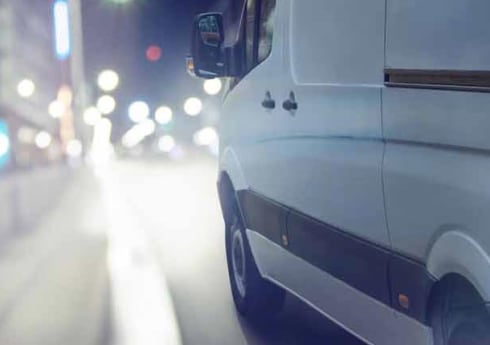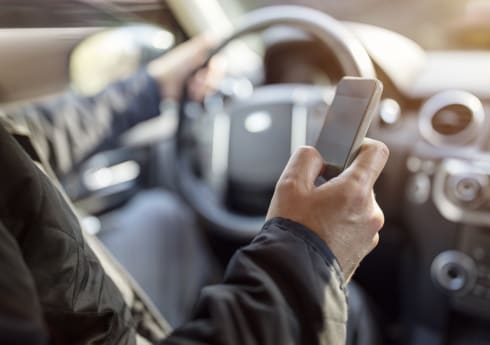5 Minute Fleet Telematics Guide
What is Telematics?
Vehicles equipped with GPS satellite receivers trace and then transmit the location to an operator. There are a wide range of providers selling telematics, so it’s important to select the right type of system for your business at the outset. Telematics systems range from simple low cost smartphone-based apps to sophisticated multi-functional solutions.
Who are the primary users of telematics and why?
Anyone that relies on vehicles to deliver goods or provide a service – mostly van and truck fleets but also company cars and plant. For private motorists and in particular younger drivers, some insurers offer reduced premiums for cars fitted with telematics. By showing where a vehicle is located, telematics provides real-time visibility of mobile operations for improved control, security and customer service. In addition, tracking data is logged to record movements, arrival and departure times, time on site, as well data analytics for producing management reports. Telematics is used mainly to improve efficiency and productivity, but it also improves safety and security.
What are the options available?
There are two things to consider; the actual system and who supplies it. As hardware and communication costs have come down the telematics industry has opened up to many more suppliers. That’s good from a competition and price perspective but it has pitfalls. Once you have fitted telematics it is probable that you will be able to improve your efficiency, productivity and customer service. Telematics is something that will enable the business to transform and remain competitive
So, it is very important to choose a supplier that is and will remain financially secure; ideally part of a large diverse and long established company, with the resources and back up you need. You don’t want to arrive at the office and discover your supplier has disappeared along with all your data. Remember also you need to choose a system that will be professionally fitted; a company with a strong presence in the fleet sector will certainly have the right credentials.
So, what about the actual system?
To an extent you get what you pay for and the cheapest options will have limitations. For example a smartphone can be turned off or run out of battery and might get lost or stolen. Another inexpensive option is a plug-and-play device that is powered by the cigarette lighter and this can be useful as a temporary solution. However, it is advisable get a system that is actually hard-wired into the vehicle so it is powered and automatically activated when the ignition is turned on, working without any involvement by the driver. Since many of the benefits of telematics revolve around the data collected, the data feed really needs to be uninterrupted.
You need to select a telematics solution that fits your needs and something that is going to be easy to implement and use. The key is to get the basics right and not get sold on something that turns out to be too complicated with features that you don’t need. You’ll end up paying a premium for things you just don’t use. If it is your first venture into telematics look for something that gets the fundamental right; proven, accurate, reliable and in an affordable package with no hidden cost surprises.
What features are important?
The basics are of course reliable GPS tracking and communication but with a well developed user interface. Look at the small print for details such as the frequency of vehicle location updates which ought to be at around 30 seconds. Accessibility and ease of use are important so look for a modern system that has been developed as a cloud-based solution from the outset; something that provides easy access online and integrates easily with other fleet–related data such as fuel cards. Other important features include a driver ID facility, a linked smartphone app for driver communication and reporting.
What benefits does live tracking offer?
Being able to see the location of every vehicle in real time, anytime and anywhere provides immediate operational and service customers benefits. The office can see where vehicles are and whether they are on schedule and on route. Most systems can automatically generate notifications, by email or text, to alert customers on arrival times and geofencing can be set up.
Does this mean setting up a system is difficult?
From day one you’ll get immediate benefits from the build-in features that are not specific to your business. However over time the more you put in the more you will get out. For example by defining customer site locations you can automatically monitor KPI service levels and reduce invoice queries – because you have indisputable evidence of arrival times and the time spent on site.
I’m very busy and it sounds great but how can I cope with all this data?
You may have heard the term ‘Big Data’ well that’s what we are talking about here. You are right, a telematics system generates huge amounts of data. By itself that data is of little value. That’s why it’s important to choose a system that makes effective use of this data and presents the information you need simply and clearly so you can use it to improve your business. Some telematics suppliers offer other fleet-related services and have a standard platform for other closely aligned fleet-related data, such as fuel cards. Here telematics data is processed and reported as columns, charts and graphs alongside the telematics data; a very handy option. To make things even easier, some providers will even condense information down into a simple weekly and monthly report that contains all of the top-line insight you need; very helpful for those short on time.
Can we use telematics to prevent fuel card miss-use?
Yes, linking fuel card data to telematics data is really useful. Firstly you can track your KM/L without manually comparing invoices to the Kilometres driven for each vehicle and secondly you can identify any fraudulent use of your cards. There is always a possibility that cards they are being used inappropriately for non-company vehicles. Fuel fraud alerts allow you to monitor for fuel misuse by cross referencing the location of your vehicles to the location where the fuel card was used. Even if you don’t have fuel cards and your mobile staff claim a mileage allowance, the telematics data can be invaluable in spotting false mileage claims. Telematics can also allow you to differentiate between business and private journeys making it easier to reclaim fuel tax and private-use fuel.
How difficult is telematics to install and use?
A professional installer should come and fit a small GPS device into the vehicle and ideally a driver ID reader as well. You’ll need to arrange for vehicles to be available for a couple of hours. As for the tracking software, it is likely to be a cloud-based system that requires no special software and no installation. Everything in online once security access levels have been set up for each user, the system is immediately accessible and will start receiving vehicle data as soon as trackers are fitted. Plug-and-play systems powered by the cigarette lighter offer a simple solution where wiring-in a tracker is not practical; a rented vehicle or where the driver switches vehicles regularly.
Can telematics improve security?
A telematics system can trigger an alarm when there is unexpected movement, for example when the driver has not been identified or when it leaves a secure zone. Telematics may not stop the theft but it will allow for quick retrieval of the vehicle and that is vital when the business depends on it. If the vehicle is only insured for business use the system can also alert management to unauthorised use out of hours.
What about driver safety?
Duty of care has become increasingly important in recent years and telematics has an important part to play. Many insurers are reducing premiums for fleets that are equipped with trackers. The data can also be used to fight a claim in the case of an accident or a fraudulent claim, proving a vehicles’ location and the fact that it was not speeding and was being driven safely. Importantly telematics can improve driving as systems increasingly monitor how safely someone drives using algorithms that measure everything from harsh braking and acceleration to speeding and excessive idling. It’s important for duty of care and for identifying those requiring additional instruction. Also remember that your drivers are often the public face of the company; discourteous and unsafe driving will tarnish the reputation of the business.
How can telematics improve efficiency and productivity?
This is the ultimate benefit for most businesses and telematics provides a clear insight into your operational performance; something that was invisible before. With the data on Kilometres travelled, travelling time, time on site, routes taken and areas covered you have an array of actual data which can be compared with your existing ‘pre-planned’ operations. With this added visibility, you can properly access your operational costs and inevitably you’ll be able to make improvements to routes, schedules, resource allocation and many other operational variables. It’s not uncommon for companies to report 20 percent reductions in mileage and similar gains in productivity; telematics allows new working practices to be employed such as enabling engineers to work from home rather than start the day at the depot.
We are environmentally conscious, does telematics provide any benefits?
Yes, firstly you should be able to reduce CO2 and other harmful emissions by optimising routes to reduce unnecessary mileage. Telematics data will provide real data on journeys allowing you to re-access planned routes, schedules and territories. Secondly, fuel consumption can be reduced considerably through improved driving and telematics can identify drivers who require additional training and monthly ‘safest driver’ rankings provide an incentive for drivers to improve.
What about communication with the driver?
They are also likely to have paperwork to complete while out on the road, such as a proof of delivery or a service job report. If these tasks can be undertaken on a device that is linked to the telematics system, the reports can be completed on the device and it can also be used for navigation and two-way messaging. Back at the office meanwhile, you will benefit from real-time paperless reporting automatically linked to the vehicle tracking data as proof of service, time and location confirmed.
Can telematics help with compliance?
Commercial vehicle drivers are obliged to undertake walk-around safety inspections of their vehicle. So a smartphone app to undertake the checks will be really handy, providing immediate electronic data for compliance reports and the scheduling of maintenance to fix defects. Telematics data also provides a useful added check for driver hours records to help ensure compliance especially for HGV drivers.
What about device and data security?
To ensure uninterrupted data is received from the telematics device, there are some key features that should be incorporated. These include tamper-proof connections and automated alerts if there has been an attempt to tamper with the device. Secondary internal antennas are also important as they allow the unit to continue collecting and broadcasting data if external antennas have been disabled, and an internal rechargeable internal battery will allow the unit to continue operating normally if the supply power is cut.
What about data security?
Some telematics suppliers are particularly hot on data security especially if they are involved in financial services or have customers in the security industry. So, check that data is stored on secure servers and the company adheres to the highest data protection standards and personal data protection legislation such as GDPR. You will normally be able to set up login access levels so users are permitted to view their data and their precise level of access with the appropriate login security.
Vehicle tracking can give you a bird’s eye view of your fleet at all times, making it quick and easy to manage all your drivers. You can deal with breakdowns or accidents immediately and even check the driver dashcam footage or speeding incidents from your mobile phone.
As a free comparison site, iCompario can help you find the right system for the right price.



